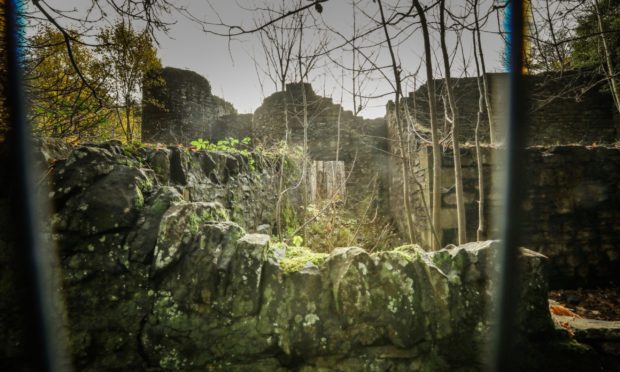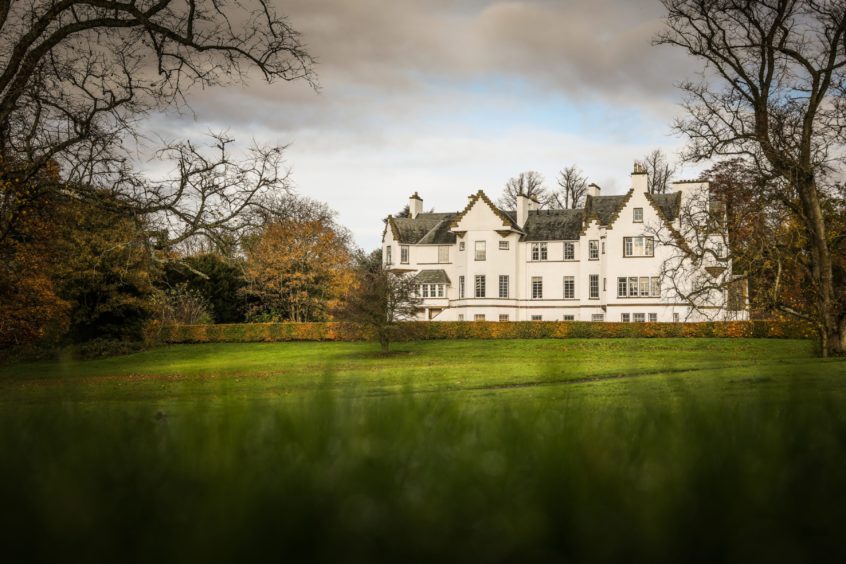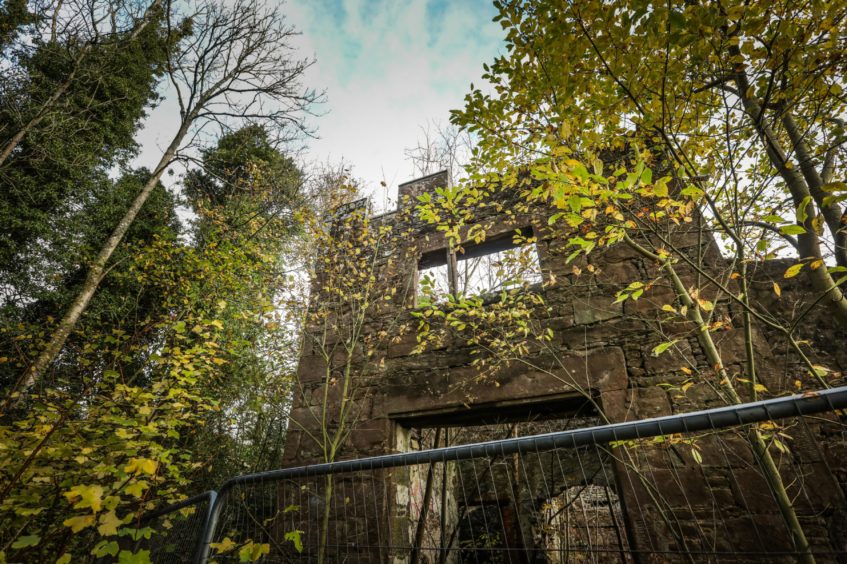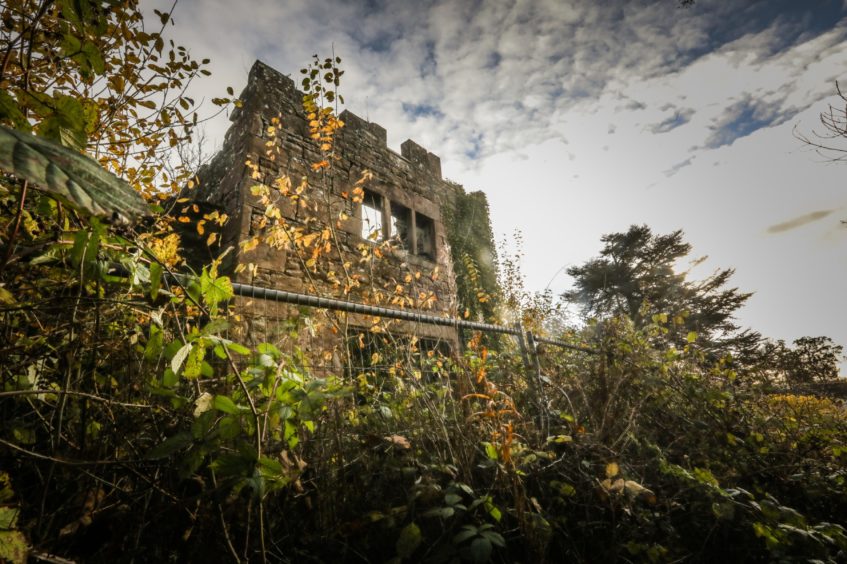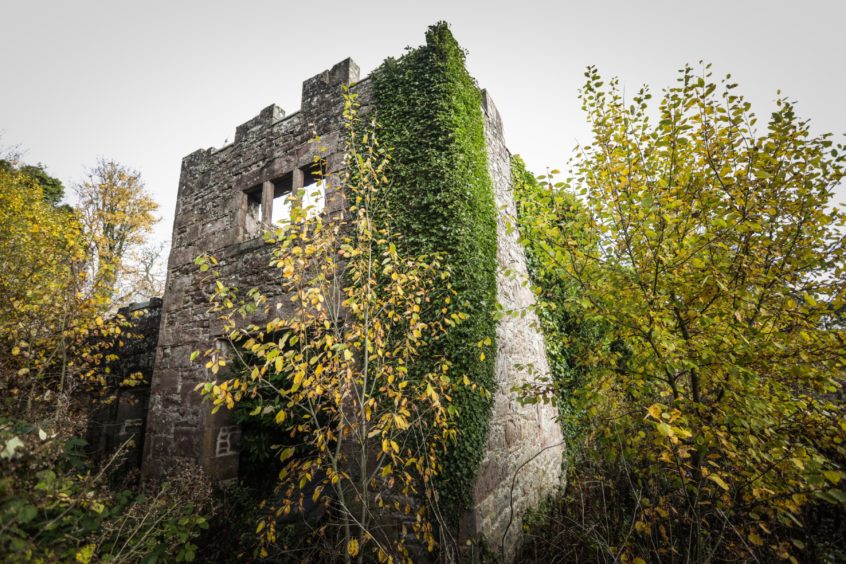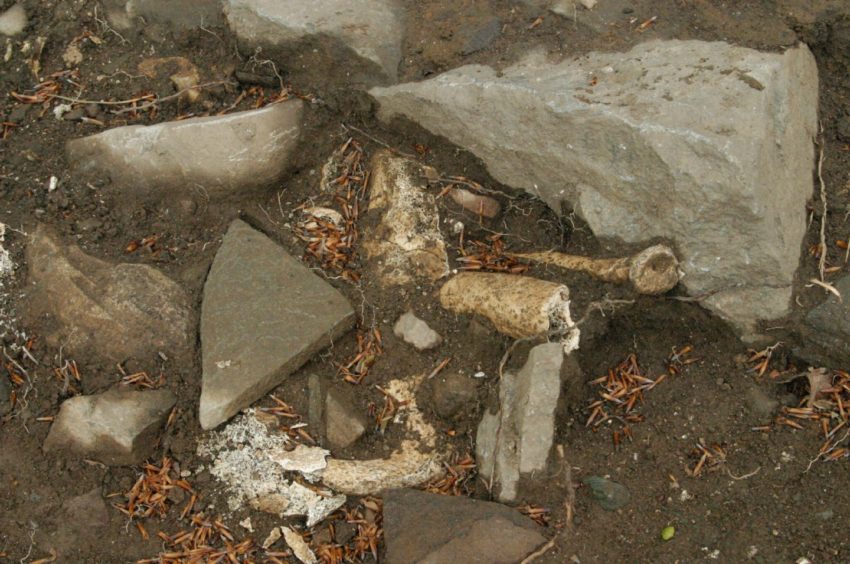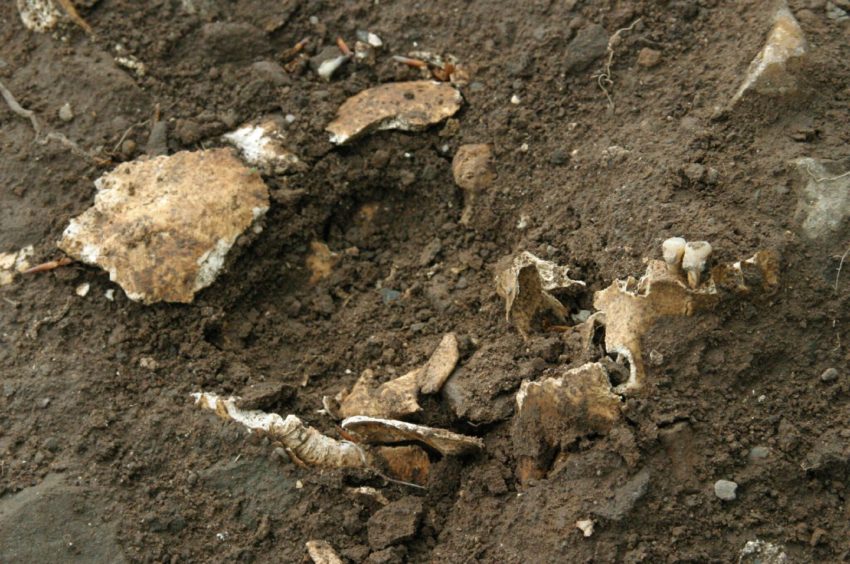Ballumbie Castle has quietly graced the banks of the Fithie burn since the days of knights and damsels in distress.
Its exact year of construction is disputed.
The most recent estimate, 1545, makes 2020 the castle’s 475th anniversary.
Historic Environment Scotland, however, describe it as a fourteenth or fifteenth century structure, showing its considerable antiquity.
It was already a ruin by 1682 but it was restored for a short while in the 1800s to form a courtyard stable block for the then newly built Ballumbie House which was constructed adjacent to the castle for David Miller.
The castle on the Angus/Dundee border has therefore witnessed the comings and goings of people and horses’ hooves over several centuries.
Burst of greenery
Forfarshire Illustrated remarked in 1843 that ‘the ruins occupy a beautiful position, and with the surrounding scenery form a very pleasing picture’.
The castle’s immediate surroundings continue to offer a burst of greenery in what is now the Ballumbie Castle housing estate, bordering on the golf course of the same name.
Ballumbie Castle is made of grey rubble sandstone, the later additions with droved pink ashlar quoins.
A pavilion sits to the far right.
The interiors of the towers feature vaulted chambers, whilst a doocot sits in that to the south east.
Access is prohibited beyond the castle’s security fencing for reasons of personal safety.
But there are plans to breathe new life into the castle, securing the external structure and creating within it a walled garden space for the benefit of the local community.
The castle has been in possession of a number of families including the Lovells, the Maules (the Earls of Panmure; the 4th Earl was James Maule of Ballumbie), the Dempsters of Dunnichen, the Millers, the McGavins, and the Lindley-Highfields (with the 14th Baron of Cartsburn).
The current laird of Ballumbie Castle, Mark Lindley-Highfield, became the owner in 2008 when the financial crisis of 2007-2008 led to the collapse of a preservation group.
In 2010, he was recognised by William David Hamilton Sellar, then Lord Lyon King of Arms, in the name of Mark Paul Lindley-Highfield of Ballumbie Castle.
The castle ruins are now held in trust, while he retains the surrounding lands.
Ballumbie Castle was described as “in good condition considering its ruin status” by the Buildings at Risk Register for Scotland in 2009, and noted as being in “much the same condition” in an inspection of 2016.
Spread fear
Mr Lindley-Highfield said: “Former owners of the castle, the Lovells, included Sir Henry Lovell, who was a renowned local tyrant.
“His forebears moved up to Angus from Hawick and had established themselves in Dundee, contributing to the local community through public office.
“Henry himself joined the Guildry of Dundee on 20th June 1559.
“He was inclined, however, to take more than to give, and spread fear amongst his neighbours.
“It is reputed that Claypotts Castle was built to protect its owner from the brute.
“Lovell and his gangs of men were reported to have felled trees, knocked down houses and seized assets on the rampage in Monifieth.”
One of his first recorded victims was James Durham of nearby Pitkerro House, a douce man who professed to be ‘ane sober and poor gentleman’. Durham complained to the authorities that Lovell and his men frequently came to his house with the purpose of murdering him.
On April 23 1566, Lovell and 18 henchmen came to Pitkerro House.
Durham was absent but Lovell threatened his wife, then wounded a servant in the head with his sword.
Another servant had a staff broken over him.
Remarkable bravery
An earlier Lovell, but through later marriage, is remembered for an action of a more positive note.
Mr Lindley-Highfield said: “According to the Douglas Archives, Catherine Douglas, later known as Kate Barlass, sought to defend King James I from assassination on 20th February 1437.
“While the King was staying in a Dominican chapterhouse in Perth, Catherine sought to protect the King by inserting her arm into the void in a door where a protective bar should have been present.
“Her arm was broken and unfortunately the King was still killed, however her bravery was quite remarkable.
“Ballumbie Castle became her home after her marriage to Sir Richard Lovell of Ballumbie.”
The event was commemorated in Dante Gabriel Rossetti’s poem The King’s Tragedy in 1881 which included over 800 verses and contains the line “Catherine, keep the door!”.
Development work uncovered forgotten church and human remains
An archaeological evaluation was carried out ahead of a housing development on land belonging to the Ballumbie estate, which led to the previously lost Ballumbie medieval church being rediscovered.
The church was originally a chapel of Lundie and became a parish church in 1470.
It was built in sandstone and its internal walls were either plastered or whitewashed.
Development work by Stewart Milne Homes located disarticulated human remains to the north west of the ruins of Ballumbie Castle when they began preparing the site for construction in 2005.
Completely unknown
The building developers notified the police and Angus Council and brought in archaeological experts from SUAT Ltd to remove the remains for them to be buried elsewhere.
It was decided complete excavation was necessary because preservation was not an option.
Eight weeks of excavation revealed the remains of the forgotten medieval church, associated Laird’s Aisle and graveyard.
The medieval activity overlay a completely unknown Early Christian long-cist cemetery that was defined by a ditch.
The aisle contained the remains of at least four human burials, one of which lay in a mural tomb in the southern wall.
The church contained many layers of internal burial, concentrated at its western end, and included the burial of a priest.
This site has proved to be one of the most important rural medieval church sites excavated in Scotland.
Nine coins were recovered, probably medieval, one, possibly two, of silver.
Organic remains were found on several items, including the possible remains of a sheath on a possible blade.
The vast majority of the iron finds were nails, several with wood adhering.
All of the iron objects were mineralised.
Copper alloy finds, all extensively corroded with varying degrees of preservation of the surface area, were represented by coins, various fragments, spoons, tags and buckles and two tubular bracelets, one with much detail remaining.
This also had a small fragment of textile adhering and traces of contact with leather.
One of the coins had two twists of mustard coloured thread on one side.
A Tomb with a View: Stories and glories of graveyards which pay homage to the dead
